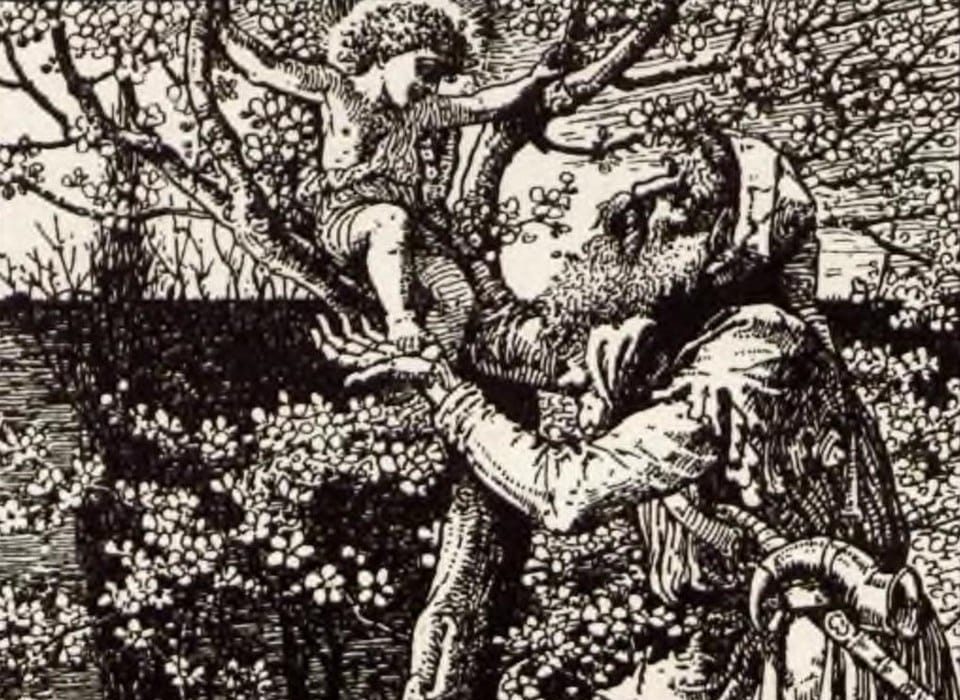When we think of a battle between science and folklore, I do not think a quaint horror story of a mathematics students comes to mind. However, in “The Judge’s House” by Bram Stoker, we have just that scenario.
Today, I am going to provide a short summary and analysis of the short story “The Judge’s House” by Bram Stoker. It’s quite spooky and features many elements of Gothic literature. Even so, it is a stand out classic in the haunted house genre.
Summary
Looking for a Quiet Place
The story takes place at the turn of the century. It is about a math student named Malcolm Malcolmson, who is seeking a quiet place to work on his studies. Luckily, after searching for a time, he discovers a long-abandoned home. The home once belonged to a judge in the town of Benchurch. There the student takes up residence for a time.
The house is a strange one:
“It was an old rambling, heavy-built house of the Jacobean style, with heavy gables and windows, unusually small, and set higher than was customary in such houses, and was surrounded with a high brick wall massively built. Indeed, on examination, it looked more like a fortified house than an ordinary dwelling. But all these things pleased Malcolmson” (Stoker).
The House is Unquiet
However, the student is young and skeptical, so pays no mind to the superstitious warnings. Yet, slowly, over the course of the following days, he realizes rats have infested the house. The vermin both unsettles and alarms him. As it turns out, they make quite a racket while he attempts to work on his mathematical quandaries.
“Tonight the rats disturbed him more than they had done on the previous night. How they scampered up and down and under and over! How they squeaked, and scratched, and gnawed! How they, getting bolder by degrees, came to the mouths of their holes and to the chinks and cracks and crannies in the wainscoting till their eyes shone like tiny lamps as the firelight rose and fell” (Stoker).
Furthermore, various characters warn him that the Judge’s house is a haunted one. The judge was a twisted man who sent many criminals to death by hanging with complete impunity. One day, after traveling to the local inn “The Good Traveler,” Malcolmson meets with local doctor and scholar Dr. Thornhill. Thornhill tells him about the Judge’s evil deeds. The judge was a twisted man, Malcolmson is told. In fact, he was so evil, he had the rope used to hang those he sentenced to death hung from his home’s warning bell.
The Rope
Malcolmson investigates the rope at the Judge’s house and takes a “deadly interest in it.” He speculates as to “who these victims were, and the grim wish of the Judge to have such a ghastly relic ever under his eyes” (Stoker). It is at this point that a particularly antagonistic rat emerges. Before, it had been assailing the young student over the course of a few days emerges once again to antagonize him some more.
And, yet, the student is unable to kill the rat. He is then confronted by none other than the judge himself. In spectral form, the judge harries him with a noose made from the alarm bell rope.
Stoker writes, “He saw the Judge approach—still keeping between him and the door—and raise the noose and throw it towards him as if to entangle him. With a great effort he made a quick movement to one side, and saw the rope fall beside him, and heard it strike the oaken floor. Again the Judge raised the noose and tried to ensnare him, ever keeping his baleful eyes fixed on him, and each time by a mighty effort the student just managed to evade it.”
Unfortunately, the student succumbs to his own skepticism and reticence to believe in the supernatural. By the time help arrives, he is found the hanged from the rafters.
“There at the end of the rope of the great alarm bell hung the body of the student, and on the face of the Judge in the picture was a malignant smile” (Stoker).
Analysis
Bram Stoker’s “The Judge’s House” is a quintessential ghost story that benefits from Stoker’s own imagination and talent for description. The story reads like a folkloric argument between personal belief and skepticism. I think the reader finds—just as they would in Dracula or the short story “Dracula’s Guest”–that Stoker places a great weight on belief and on the concreteness of oral storytelling, whether it is pure invention or not.
Stoker was born in 1847 and died in 1912—when Gothic horror and weird fiction were very popular. He was also a mathematics major at Trinity College. This gives us some understanding as to the pursuits of Malcolm Malcolmson. It also gives us a glimpse into the mind of a man who very clearly has an understanding of the strength of mathematics and its rational appeals. However, much like author Washington Irving, Stoker also clearly has a passion for folklore and storytelling. His interests creates the neat dichotomy between the student and the town in “The Judge’s House.” The story itself is one of skepticism and a fixation on the duality of the world. It is a story of science and rationale, and one of mystery and magic.
Conclusion
In “The Judge’s House” by Bram Stoker, Malcolmson wants a place to study regardless of the evil things lurking in the shadows, whether they be rats or spirits. Meanwhile, the town of Benchurch has relied on their beliefs and traditions and want none of it.
The landlady of the inn tells the student, “It is too bad of me, sir, and you—and a young gentlemen, too—if you will pardon me saying it, going to live there all alone. If you were my boy—and you’ll excuse me for saying it—you wouldn’t sleep there a night, not if I had to go there myself and pull the big alarm bell that’s on the roof!” (Stoker).
As such, she is the stand-in for the entire community. They knew something was wrong with the house, and they warn him to stay away. However, the student’s rationale mind only wants a place to study.
No doubt, at least according to Stoker, if Malcolmson had listened to the warnings of the superstitious folk then he would still be alive. Rationalism, it seems, doesn’t account for everything–even past misdeeds.
Works Cited
Stoker, Bram. “The Judge’s House.” Many Books, 10 Oct. 2022, https://library.um.edu.mo/ebooks/b2828544x.pdf.





Leave a comment